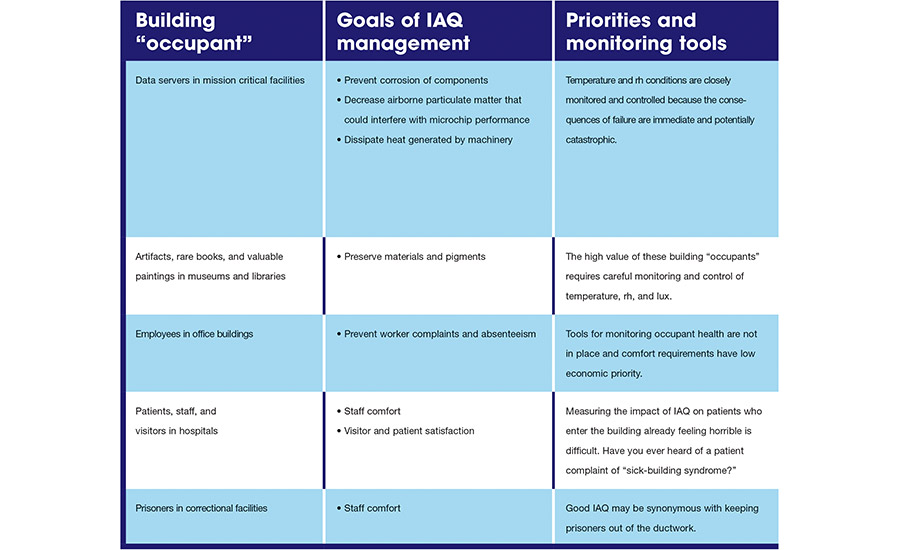Humans are quantitative creatures, and we do best when there are clear metrics to track our investments, whether they are financial, emotional, or simply the use of our time.
When it comes to designing and managing HVAC systems in commercial buildings, what outputs can we measure to determine the ROI of the system?
Metrics on HVAC performance from the perspective of the building per se are clear-cut:
- Energy consumption
- Chemical content of emissions
- Moisture in building components
- Mold in ducts or walls
- Building structural integrity
Monitoring the health of the primary “occupant” of the building, however, is not always possible or considered a high priority.
Although we now monitor occupant comfort to some extent, we have not created the measurement tools needed to understand the impact of indoor building conditions on human health. When there is overt poisoning from toxins, such as asbestos and lung disease, lead in paint and child brain dysfunction, or off-gassing of formaldehyde in a fire, there are laws prohibiting the use of the material.
Nevertheless, we lack basic information about the potential connections between chronic diseases and IAQ factors such as rh, carbon dioxide, or particulate matter. Data on trends in health conditions potentially related to the indoor environment is largely unavailable.
Now that the human genome has been fully mapped, we can link genetic predispositions to chronic diseases. Yet, inherited DNA sequences are only one of the factors that contribute to many chronic diseases. For example, a study published in 2000 on the medical histories of twins with cancer revealed that inherited genetic factors are only a minor contribution to most types of cancers. This leaves environmental influences as a driving force in cell growth dysregulation that can result in cancer.
We know that people spend the majority of their time indoors. What we do not fully understand are the links between IAQ and chronic diseases such as asthma, auto-immune disorders such as lupus, and birth defects, to name a few. These conditions are on the increase and are costly to human lives and economics. If we can map the entire human genome, we should be able to create a database of symptoms of health and illness in building occupants, and develop a network to associate these symptoms with the indoor climates of the buildings in which we spend most of our time.
People today are asking sophisticated questions about their health. How much is illness caused by our behavior, genetic makeup, components in the air or water, or our diet? Unfortunately, we are left with too many unanswered questions. Tracking health conditions associated with both indoor and outdoor air parameters will allow us to answer some of these questions and will give us metrics to improve upon. The great news is that this understanding will allow us to remove or abate the hazards before they cause harm. ES





